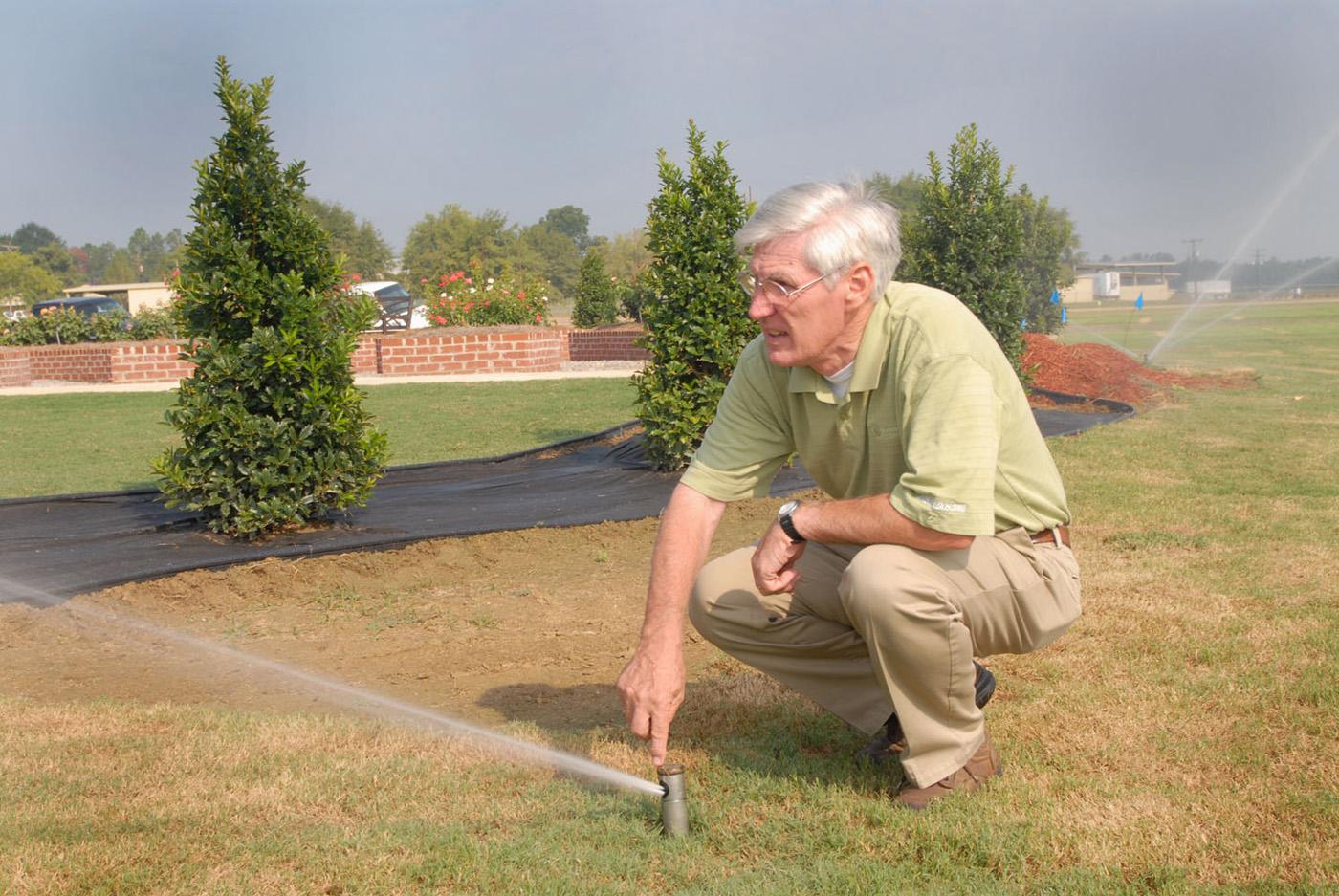Information Possibly Outdated
The information presented on this page was originally released on August 24, 2006. It may not be outdated, but please search our site for more current information. If you plan to quote or reference this information in a publication, please check with the Extension specialist or author before proceeding.
Know when, how to water plants to improve survival
MISSISSIPPI STATE -- Watering lawn plants and grass is essential during a drought, but how and when to water is the key to keeping yards healthy and attractive.
It is important to water with long-term effects in mind is important during a drought, said Mississippi State University Extension Service horticulturist Norman Winter.
“Shrubs and trees need to be watered deeply and probably less often that most people think, just once a week in most cases,” Winter said. “When we water deep, the roots get trained to go deep for water. The roots go deeper for the remaining moisture as the top couple of inches evaporate.”
Simply misting for a few minutes each day, he added, can have fatal consequences for lawn plants.
“Shallow watering trains the roots to stay in the top 2 or 3 inches of soil, so if we go away for a long weekend or on vacation, our plants may be dead when we return,” Winter said.
Mulch also helps plants survive droughts and stay healthier during normal conditions.
“A good 4- to 6-inch layer of mulch helps prevent or at least delay the loss of water to evaporation,” Winter said. “Mulch also keeps the soil cooler and deters weeds, which compete for available moisture.”
While summer 2006 has been much hotter and drier than usual, Winter said it is a good idea to plan for such conditions when selecting plants for lawns in the Mississippi.
“Trees and shrubs that are native to the South are well adapted to our climate and have stood the test of time,” he said. “Favorites are oaks, bald cypress, sweet gum, southern wax myrtle, redbuds and dogwoods.”
When it comes to taking care of the grass in home lawns during drought conditions, water is the cheapest tool available, said MSU Extension turf specialist Wayne Wells.
“Lawns need about an inch to an inch-and-a-half of water a week,” Wells said. “It's best to water heavy enough to moisten the soil to a depth of 3 to 4 inches, which will require a minimum of about a half inch of water each watering.”
As with trees and shrubs, just watering lawn turf lightly several times a week keeps the grass from developing a deep, healthy root system.
When to water, Wells added, is also an important consideration.
“Lawns need to be watered early enough in the day so the foliage will dry before dark,” he said. “Leaving grass wet overnight helps diseases get a foothold in lawns.”
Insects can cause additional damage to lawns that are already under drought stress.
“St. Augustine lawns in some areas of the state, including the Columbus area, presently have heavy infestations of chinch bugs,” Wells said. “High numbers of fall army worms are showing up in irrigated lawns because the moths responsible for the worms are attracted to the moisture. Homeowners need to check their lawns for insect damage and treat as needed to avoid additional damage to already drought-stressed grass.”
Changing mowing habits also can ease stress on grass.
“Raising the height of your mower about one-quarter to one-half inch, or one notch for most walk-behind mowers, will help your lawn cope with drought stress,” Wells said.










